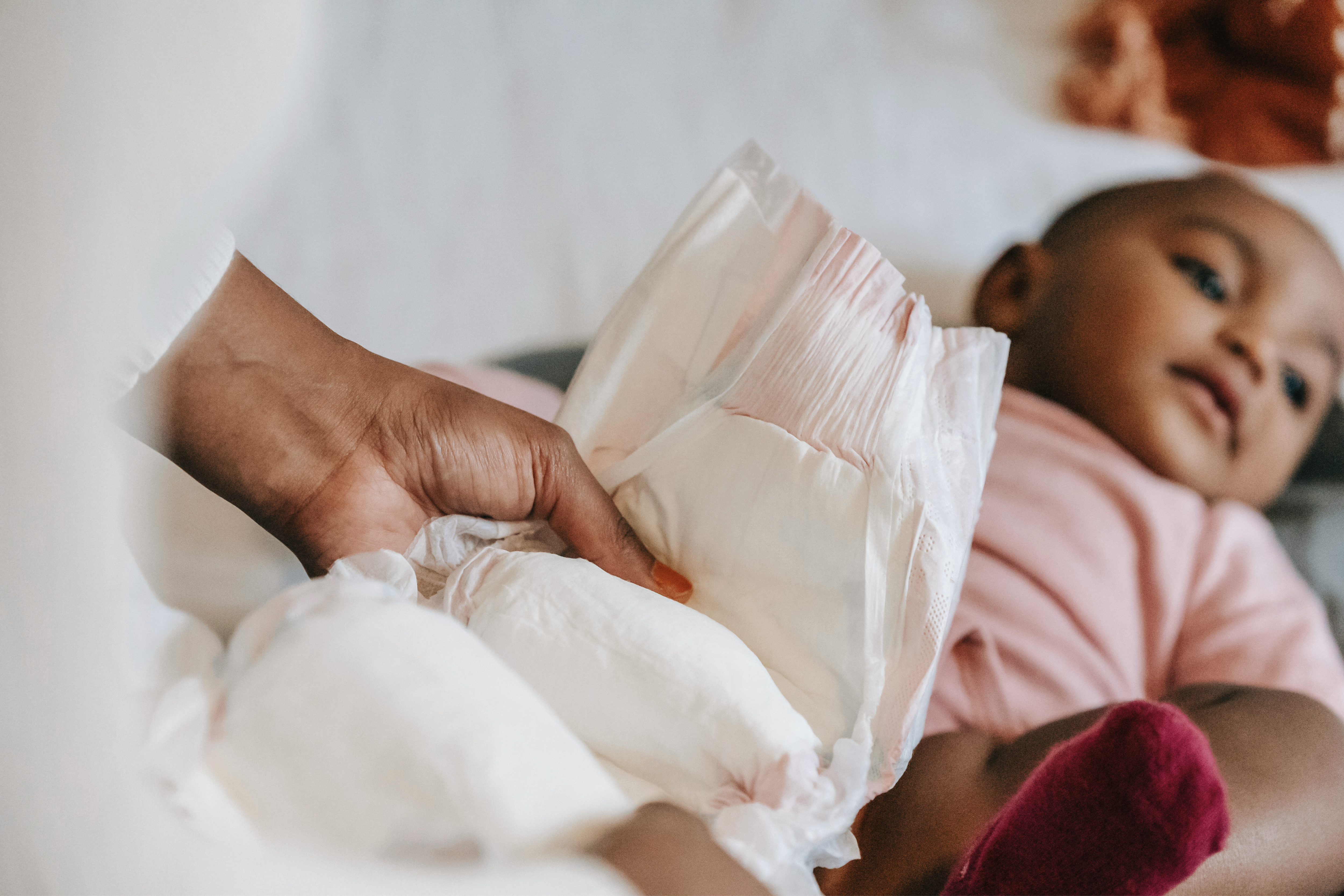To read the first part of this article, go to Baby Stool.
Updated article : October, 2023.
In the days following birth, babies will expel their first stool which is called meconium. This stool is thick, sticky, and so dark green that it’s almost black. As a comparison, it looks a bit like molasses.
 Meconium is a substance accumulated in the baby’s intestine when it’s in the mother’s uterus. Meconium doesn’t really smell (thank goodness!!! 😊). By drinking milk after birth, the baby will eliminate the meconium, leading to transition stool, stool that will go from dark green to light green, sometimes fluorescent green then to a mustard yellow. You will often see a strange mix of all these colours in their diaper (cute, right?).
Meconium is a substance accumulated in the baby’s intestine when it’s in the mother’s uterus. Meconium doesn’t really smell (thank goodness!!! 😊). By drinking milk after birth, the baby will eliminate the meconium, leading to transition stool, stool that will go from dark green to light green, sometimes fluorescent green then to a mustard yellow. You will often see a strange mix of all these colours in their diaper (cute, right?).
Don’t be surprised to see blacker stool if the baby is taking iron supplements. Iron changes the colour, but it remains normal under these conditions. Also, if you note the presence of blood filaments or small coagulated lumps of blood in your baby’s stool, don’t panic immediately. Check if Mom has wounds on her nipples. Is this your case? If yes, your baby might be swallowing blood from the wound when they suck, which ends up coming out the other end. Your baby might also have an anal wound. Sometimes the wound is visible on the outside of the anus, but it could also be internal. An internal wound is more likely if the baby screams its head off when it passes gas or when they pass stool, as it irritates the wound on passage. To help them, you can apply a thick layer of Ihle’s Paste to the area. You can also apply it internally using a Q-tip with the paste on the cotton head. Ihle’s Paste is more opaque than cream, and it will protect the wound when passing gas and stool. It will help soothe your baby. If the paste is ineffective, consult your doctor to make sure that it’s not due to another issue.
If the baby repeatedly has blood in its stool without a physically visible reason, this isn’t normal. It could be a sign of an allergy. The health history, the family, the birthing process, etc. need to be analysed to try to understand the situation and provide you with the appropriate recommendations.
Blood in the stool may be linked to an anal fissure, an intolerance or allergy (often bovine protein) or an infection of some kind (bacterial, viral or parasitic). However, if the presence of a little blood is temporary and the baby’s general condition is very good, the whole thing is considered normal.
Finally, a young baby’s white or colourless stool should be investigated. It’s very important here to seek advice, as the color of stools comes from the liver, and if the stools are white, this may be linked to a major problem with the child’s liver.
Breastfeeding Baby
After birth, breastfed baby’s stools will be darker, almost black, then turn from dark green to fluorescent green and finally mustard yellow. The yellowish color (which can also tend towards orange) of the stool is also due to the release of bilirubin accumulated during the physiological jaundice of the newborn, so there’s nothing to worry about here. After a few weeks postnatal, a breastfed baby’s stools can be expected to vary in color from yellow to green, until the baby starts eating solids. Thereafter, the stool may become more brownish in color.
If the baby’s stools remain more greenish, it’s best to have them checked by a professional.
Bottle-Fed Baby
A baby fed with commercial formulas will have stool where the colour will be associated with the formula they drink. As such, some formulas cause forest green stool, while others lime green or even khaki or yellow.
The smell of baby’s stools
Breastfed baby
As long as the baby doesn’t eat solids, the smell of stools is not very pronounced with breast milk. But gas can add to the odor, which isn’t always very pleasant, let’s face it!
Bottle-fed baby
When it comes to the smell of stools from formula-fed babies, it’s usually pretty nauseating, and even more so with hydrolyzed commercial formulas.
To continue reading, go to Baby stool frequency.


